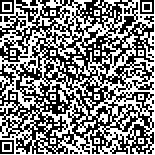| 摘要: |
| 基于白龙江流域研究区1960~2013年逐日气温、风速、太阳总辐射、相对湿度、日照时数和降水数据,应用了Penman Monteith模型并结合线性趋势、Morlet小波分析及Mann Kendall 检测等方法对研究区地表湿润指数的时空演变特征进行了分析。结果表明:近54年来,白龙江流域地表湿润指数总体在波动中呈增加趋势,其变化倾向率为007/10年,气候总体趋于湿润化,其中变湿增幅以20世纪70年代最大,但20世纪90年代和21世纪初,地表湿润指数呈减少趋势; 流域内地表湿润指数空间分布格局也存在一定差异,表现为上游、中游、下游地表湿润指数变化倾向率分别为-002/10年、016/10年和008/10年; 从多年平均值来看,白龙江流域中下游区域地表湿润指数总体明显高于上游地区。此外,白龙江上游、中游、下游及流域地表湿润指数的主周期分别为16年、20年、15年和7年。突变分析显示,流域地表湿润指数在1983年左右发生突变,多元回归分析表明日照时数和太阳总辐射是影响白龙江流域地表湿润指数变化的主要气象因子。 |
| 关键词: 白龙江流域 湿润指数 Penman-Monteith模型 周期 气象因子 |
| DOI:10.7621/cjarrp.1005-9121.20150203 |
| 分类号: |
| 基金项目:兰州大学“中央高校基本科研业务费专项资金”和陇南师范高等专科学校重点项目(2012LSZK01004)联合资助 |
|
| CHARACTERISTICS OF SURFACE HUMIDITY INDEX IN BAILONGJIANG RIVER BASIN DURING 1960~2013 |
|
Zhang Fangfang1, Wang Qiang2, Zhang Xifeng3
|
|
1.Longnan Teachers College, Longnan 742500, China;2.Lanzhou literature and information Center of Chinese Academy of Sciences, Lanzhou 730000, China;3.Center for Dryland Water Resources Research and Watershed Science, Key Laboratory of West China's Environmental
System (Ministry of Education), Lanzhou University, Lanzhou 730000, China
|
| Abstract: |
| At present, climate warming as one of the main feature of the global climate change has become hot issue for scholars worldwide. Drought, as a potential natural phenomenon, is considered to be one of the most serious natural disasters in the world having great influence on economic damage. Therefore, an objective and reasonable drought assessment index becomes even more important. Based on the daily temperature, wind speed, total solar radiation, related humidity, sunshine hours, and precipitation data of Bailong River Basion from 1960 to 2013, humidity index was estimated and analyzed using the methods of Penman-Monteith model, linear trend, Mann-Kendall as well as Morlet wavelet under the background of climate change. The results showed that in recent 54 years, the surface humidity index in the Bailong River Basion displayed an increasing trend with fluctuation and the increasing rate was 090/10a, indicating that climate the slightly trended to be wet in the study area. Additionally, the surface humidity index in the 1970s had the greatest increase among all the decades. However, the surface humidity index displayed a decreasing trend in the 1990s as well as the 2000s. It was found that the spatial distribution pattern of surface humidity index in the Bailong River Basion presented variously. Namely, the rates of changing trend in the upper, middle and lower reaches were -002/10a, 070/10a and 086/10a, respectively. Additionally, the decadal average of the surface humidity index in lower reaches was generally higher than that of in middle and upper reaches, while the trend of the surface humidity index was lower than that of middle reaches. From average of the years, the surface humidity index of the middle and lower reaches of Bailong River Basin were significantly higher than that of the upstream region. The major cycle of upper middle, downstream of the Bailong River and Basin were changing respectively with 16a, 20a, 15a, 7a, and the abrupt change of humidity index happened in 1993. Meanwhile, the total solar radiation and sunshine hours were the key factors that influenced the humidity index in the study region, and correlation coefficients between solar radiation, sunshine hours and the surface humidity index were 083 and 081, respectively. While, the correlation coefficients between average wind speed, precipitation, average temperature, relative humidity and the surface humidity index were 056,-055, 070,-069. |
| Key words: Bailong River basion humidity index Penman-Monteith model cycle meteorological factors |

